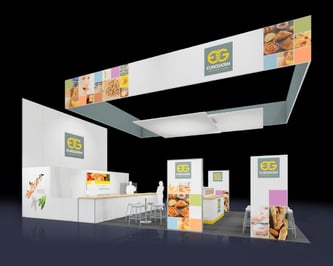According to the Center for Exhibition Industry Research, more than $24 billion is spent annually by U.S. exhibitors on trade show displays, yet 70 percent оf these еxhіbіtоrѕ set no ѕресіfіс оbjесtіvеѕ or goals fоr their exhibits. In 2019, event marketing teams should find ways to become goal-driven, and metrics are the place to start. There are two types of metrics to utilize: hard metrics and soft metrics. The parameters attached to hard metrics serve as strong indicators and imply action items. Soft metrics are all about engagement and awareness. For example, the number of likes, comments and shares on social media are soft metrics. Here are some of the necessary metrics that can determine the ROI of a trade show:  Influenced revenue: Meetings with prospects at events have the ability to advance sales conversations. Track and measure influenced revenue via a connected sales pipeline to measure the impact of strategic B2B meetings.
Influenced revenue: Meetings with prospects at events have the ability to advance sales conversations. Track and measure influenced revenue via a connected sales pipeline to measure the impact of strategic B2B meetings.
Meeting frequency: A certain number of meetings need to be scheduled in order for an event to be successful. The leads brought in and the number of opportunities successfully converted stems from the number of meetings scheduled.
Average time spent in meetings: The average time spent on meetings is a critical statistic to understanding issues that hamper sales efforts. This metric will build an understanding of how well a sales rep is doing in the meetings.
Win rate: The win rate is the number of opportunities that have been successfully converted to customers. By analyzing the win rate, one can understand a representative’s strengths and weaknesses and train or reassign him to handle a different phase of the sales cycle.
Average deal size: The size of deals determines the success of an organization’s sales framework. Keeping a tab on the average deal size tells marketers to focus on more important opportunities that are more likely to bring in a larger chunk of revenue. Analyzing the deal size can also streamline the lead generation process by targeting deals that are more profitable to the organization.
Meetings per deal closed: Meetings are considered to be successful if they manage to move prospects along the sales cycle and influence them to take a step closer to the sale. Analyzing the meetings per closed deal can help understand the effectiveness of the sales process. Areas of improvements and the personnel needed to be reeled in to get the most out of these meetings and opportunities.
The only thing that matters after a trade show is the outcome. It all boils down to how investments are used and how much top-line revenue was brought in. Showing good results can not only help establish the value of trade show investments but can also influence higher management to allocate bigger budgets for subsequent renditions.
Guest Blogger: Ravi Chalaka is the CMO of Jifflenow, and a marketing and business development expert who creates and executes business strategies, generating demand and raising brand/product awareness in competitive markets. As VP of Marketing at both large and small technology companies, Ravi built strong teams and brands and enabled faster revenue growth for a wide range of solutions based on Big Data, SaaS, AI and IoT software, HCI, SAN, NAS. https://www.tsnn.com/blog/how-measure-trade-show-success






